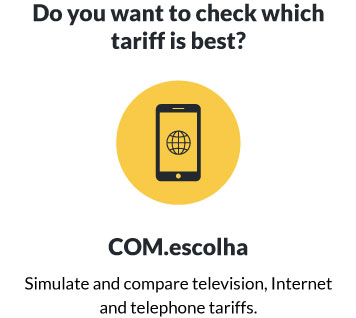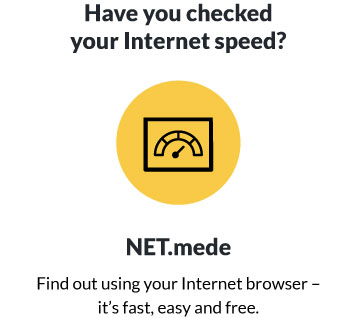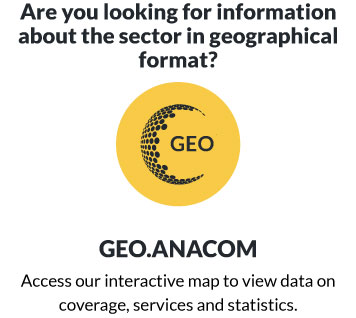Autoridade Nacional de Comunicações
Regulation no. 532/2023
(This is not an official translation of the law)
Regulation approving the regulation on the designation of the ‘49’ range of the National Numbering Plan
Under article 16 of the Electronic Communications Law, approved by Law No 16/22, of 16 August, the provision of electronic communications networks and services in Portugal is free, being subject only to the general authorisation regime, and may not depend on any decision or prior act of the National regulatory Authority (ANACOM), without prejudice to the regime applicable to the use of numbering resources on which it is based.
According to paragraph 2 of article 51 of the Electronic Communications Law, it is incumbent on ANACOM to (i) approve the National Numbering Plan (NNP), including its guidelines and general principles, (ii) manage the NNP in accordance with the principles of transparency, efficiency, equality and non-discrimination, (iii) define the conditions for the assignment and use of national numbering resources, as well as to (iv) assign national numbering resources through objective, transparent, proportionate and non-discriminatory procedures.
Pursuant to paragraphs 1 and 2 of article 54 of the abovementioned law, the use of numbering resources depends on the allocation of rights of use by ANACOM, upon application by interested parties.
Without prejudice to the general conditions applicable to the provision of electronic communications networks or services, under the terms of paragraph 1 of article 27 of the Electronic Communications Law, rights of use for numbering resources may only be subject to the conditions laid down in article 56, which aim, inter alia, to ensure effective and efficient use of resources and their portability.
The Principles and criteria for the management and assignment of numbering resources, approved by ANACOM by decision of 2 June 1999, also apply to the assigment and use of numbering resources.
In carrying out its tasks, in particular those relating to access to the electronic communications market and the efficient management of numbering resources, ANACOM has monitored the development of applications enabling machine-to-machine (M2M) communications, in particular in the context of smart metering of water or electricity consumption, video surveillance, health monitoring and asset tracking, among others, which in many cases require the use of public numbering resources to enable identification and, thus, communication between the devices used in this context.
In addition, with the development of the 5th generation mobile network (5G), its ability to carry more traffic and reduce response times stands out among the various possibilities and opportunities, thus supporting the increase in the number of connected devices in various sectors, such as transport, energy, health, agriculture, smart cities, public safety and assistance in the event of accidents and disasters.
Directive (EU) 2018/1972 of the European Parliament and of the Council of 11 December 2018, establishing the European Electronic Communications Code, which has been transposed into national law through the Electronic Communications Law, also highlights this issue, emphasising that electronic communications services include «(...) services consisting wholly or mainly in the conveyance of signals such as transmission services used for the provision of machine-to-machine services (…)».
In this context, it is important to note that M2M services do not constitute a category of electronic communications services as defined in the Electronic Communications Law, and therefore this regulation will only apply to transmission services used to provide machine-to-machine services, without prejudice to the fact that these services may depend on the use of NNP numbers.
Given that several studies point to a significant increase in M2M communications and the underlying need to use NNP numbers to uniquely identify connected devices, ANACOM believes that, for the sake of prudence, it should provide for a more demanding scenario and thus ensure adequate availability of numbers to meet future needs.
Accordingly, the purpose of this Regulation is to designate a specific range within the E.164 plan of the NNP for this purpose - the ‘49’ range - which is 12 digits long and has a total availability of 10 billion numbers.
In choosing this option, ANACOM certainly considered as alternatives the possible use of numbers from the current NNP mobile numbering ranges intended for the provision of mobile telephone services, or even the designation of a new 9-digit ‘9x’ range. However, a number of factors contributed to their rejection, namely:
The use of numbers from existing mobile numbering ranges for the provision of other services, in particular for transmission services used to provide machine-to- machine services - rather than for a specific range - would create a risk of premature exhaustion of these ranges, given the expected significant growth in demand for numbers for these services;
In the case of 9-digit number ranges, the amount available will not be compatible with the likely increase in demand for numbers for the services concerned;
The release of radio spectrum to the market, in particular in the context of the recent spectrum auction, has led to the emergence of more companies with frequencies suitable for the provision of mobile services, thus it is expected that demand for numbers in mobile numbering ranges will increase;
The entry into force of Regulation No 1028/2021 of 29 December on the subassignment of NNP E.164 numbers has also encouraged the emergence of more mobile telephone service offers, and it is expected that this will also have an impact on the demand for numbers in the mobile numbering ranges;
A possible premature exhaustion of mobile numbering ranges would have a negative impact on the market, in particular on new entrants offering mobile telephone services, as well as on end-users who are already familiar with the current NNP mobile numbering ranges.
The designation of a specific range was based on the idea that ANACOM should ensure the coherence and transparency of the NNP, maintaining the correlation between types of service and numbering ranges, so as not to create uncertainty in the market, businesses and end users.
This assessment also took into account the situation in other European countries, as a significant number of them have a specific range with numbers of greater length, as well as the views expressed by stakeholders following the publication of the notice launching this regulatory procedure and in the context of the collection of additional contributions, which resulted in a preference - with the exception of a single stakeholder - for the designation of a specific range with 12-digit numbers.
Of course, there is also a need to avoid exhausting the current NNP numbering ranges, bearing in mind that it is ANACOM’s responsibility to ensure the availability of adequate numbering resources for the provision of public electronic communications networks and publicly available electronic communications services.
The designation of this specific range, with the capacity to accommodate the numbering demand expected for the services in question, also ensures greater capacity and availability for companies to attract more and different types of customers involved in the various business models of M2M services.
Consideration has also been given to the benefits of designating a specific range, which are related to the dissemination and support of these numbers at national and international level, in a clear and transparent manner for stakeholders, including international carriers, thus ensuring the transparency of the NNP.
ANACOM has also taken into account ECC Recommendation (11)035 on Numbering and Addressing for M2M Communications, which recommends that when a new numbering range is designated, the number length in the new number range(s) accommodating future mass M2M applications should be as long as possible (in case of E.164 numbers maximum of 15 digits according to ITU-T Rec. E.164).
Given that the aforementioned ITU-T Recommendation E.164 states that the maximum number of digits for the national number should be 15, including the country code (in the case of Portugal, ‘351’), this means that in Portugal numbers in the national format can be up to 12 digits long, an option which is adopted, in this context, in this Regulation.
ANACOM also acknowledges that this immediate, non-progressive option for a longer length will have less impact in the long term on the investments or configurations that companies will have to make in order to adapt their information systems, namely those for managing numbering and billing resources. In fact, it is considered that if a shorter length were chosen initially, the likely exhaustion of the new range would lead to a further change to accommodate a longer length or a new range, which would lead to new adaptation costs and impacts for companies.
Furthermore, in the case of the services concerned, the numbers are not visible to or dialled by end-users and therefore the length of numbers does not cause any negative impact or uncertainty for these users.
Therefore, and also with a view to aligning with international standards and best practice, which will ensure the interoperability of the different systems, ANACOM considers that the numbers in the new ‘49’ range should have a length of 12 digits in the national format.
With regard to the scope of use of this range, the inclusion of mobile Internet access was also considered, taking into account that this is a service with a high potential for use, given the growing importance of this service, in particular in the context of the socio- economic changes resulting from the recent pandemic, which contributes to the risk of exhaustion of the current NNP mobile numbering ranges, and also as it is a service where the number is not visible or dialled by the end user.
ANACOM therefore considers that the provision of this service should also use the numbers in the new ‘49’ range, thus ensuring the availability of NNP numbering resources.
However, it should be noted that this new numbering range cannot be used to associate number-based interpersonal communications services with the services in question.
Given that ANACOM, in accordance with article 55 of the Electronic Communications Law, must ensure the availability of a non-geographic numbering range for the provision of electronic communications services, other than interpersonal communications services, at least within the territory of the European Union, it is considered appropriate, in view of the characteristics of the services in question, to provide for the extraterritorial use of numbers in the ‘49’ range for their provision in other countries.
With regard to number portability, it should be noted that article 141 of the Electronic Communications Law guarantees all end-users with numbers included in the NNP the right to retain them within the same service, regardless of the company providing services throughout the national territory, in the case of non-geographic numbers. Now that a new range of non-geographic numbers included in the NNP is at stake, ANACOM cannot fail to guarantee this right to end-users.
Taking into account the diversity of business models associated with the services in question, and considering that the ownership of rights of use for numbering resources may constitute an undue burden and a potential barrier to the implementation of some of these business models, it is also considered appropriate to extend the scope of the sub- assignment to numbers in the ‘49’ range.
The adoption of this Regulation therefore implies the amendment of Regulation No 58/2005, of 18 August (the Portability Regulation) and Regulation No 1028/2021, of 29 December, to the strict extent necessary to incorporate the new numbering range into their respective scopes.
Finally, in view of the time needed for companies to implement this new numbering range, to make the necessary network and system configurations, to conclude the relevant national and international interconnection or roaming agreements, and to adapt contracts or commercial offers for the provision of the services concerned, it is considered that companies currently providing these services should be allowed a transitional period in which to do so. However, at the end of this period, such companies will only be able to assign numbers from the new numbering range for the provision of the services for which it is now designated, without this entailing migration of numbers to the new numbering range.
In this context, and by decision of 27 December 2022, the draft regulation on the designation of the ‘49’ range of the NNP was approved and submitted to the public consultation procedure. Following the publication of this draft in Series II of the Official Gazette on 11 January 2023, the public consultation took place up to 22 February 2023, with six responses received in due time, which were duly taken into account in the approval of this regulation, and the respective assessment is included in the report on which ANACOM’s options are based, which is published on ANACOM’s website, together with the responses received, while safeguarding information of a confidential nature.
Therefore, in the context of the powers set out in points a), c), d), f) and h) of paragraph 1 of article 8 of ANACOM’s Statutes, as approved by Decree-Law No 39/2015 of 16 March, in pursuit of the general objectives set out in points a), b) and c) of paragraph 1 of article 5 and in the terms set out in points a) to f) of paragraph 2 of article 51, paragraph 1 of article 54, paragraphs 1 to 3 and 6 of article 55, and articles 56 and 57, all of the Electronic Communications Law, approved by Law No 16/2022, of 16 August, the Board of Directors of ANACOM, in the exercise of powers conferred under paragraph 1 of article 10 of Law No 16/2022, of 16 August, and point a) of paragraph 2 of article 9, article 10 and point b) of paragraph 1 of article 26 of its Statutes, has approved, by determination of 26 April 2023, the following regulation, which approves the regulation on the designation of the ‘49’ range of the NNP, and amends Regulations No 58/2005, of 18 August, and No 1028/2021, of 29 December, to the strict extent necessary.
Regulation approving the regulation on the designation of the ‘49’ range of the National Numbering Plan
Article 1
Subject-matter
1 – This Regulation approves the regulation on the designation of the ‘49’ range of the National Numbering Plan.
2 – This Regulation also amends:
a) Regulation No 58/2005, of 18 August;
b) Regulation No 1028/2021, of 29 December.
Article 2
Regulation on the designation of the ‘49’ range of the National Numbering Plan
The Regulation on the designation of the ‘49’ range of the National Numbering Plan is hereby approved as an annex to this Regulation, of which it forms an integral part.
Article 3
Amendment to Regulation No 58/2005, of 18 August
Article 3 of Regulation No 58/2005, of 18 August, is hereby amended to read as follows:
«Article 3
[...]
1 – […]:
a) […];
b) […];
c) […];
d) […];
e) […];
f) […];
g) […];
h) […];
i) […];
j) Transmission service used for the provision of machine-to-machine services and mobile Internet access service (49);
k) [Former point j)].
2 – […].
3 – […].
4 – […].
5 – […].
6 – […].
7 – […].
8 – […].»
Article 4
Amendment to Regulation No 1028/2021, of 29 December
Article 1 of Regulation No 1028/2021, of 29 December, is hereby amended to read as follows:
«Article 1
1 –
[…]: [...]
a)
b) […];
[…];
c)
d)
e)
f)
g) […];
[…];
[…];
[…];
[…];
h) Transmission service used for the provision of machine-to-machine services and mobile Internet access service (49).
2 – […].
3 – […].
4 – […].»
Article 5
Entry into force and transitional provision
1 – This Regulation shall enter into force on the day following that of its publication in the Official Gazette, without prejudice to the following paragraph.
2 – Companies providing services identified in article 1 of the Regulation adopted in the annex using NNP numbers shall assign numbers exclusively in the range ‘49’ within the framework of such offers as from the date of commencement of their secondary assignment, by themselves or by a beneficiary to whom they have sub-assigned such numbers, and in any case within 18 months of the entry into force of this Regulation.
ANNEX
(referred to in article 1)
Regulation on the designation of the ‘49’ range of the National Numbering Plan
Chapter I
General provisions
Article 1
Subject matter and scope
This Regulation sets out the conditions of assignment and to be attached to the rights of use for numbering resources from the numbering range designated in the National Numbering Plan (NNP) for the provision of:
a) The transmission service used for the provision of machine-to-machine services;
b) The mobile Internet access service.
Article 2
Definitions
1 – For the purposes of this Regulation, the following definitions shall apply:
a) «Electronic Communications Law» shall mean the legal system approved by Law No 16/2022 of 16 August;
b) «Portability Regulation» shall mean Regulation No 58/2005, of 18 August, as it stands;
c) «Transmission service used for the provision of machine-to-machine services» shall mean an electronic communications service that consists wholly or mainly in the transmission of signals over electronic communications networks and provides the connectivity necessary for the automatic transfer of data or information between devices or applications with little or no human intervention.
2 – Machine-to-machine services provided for in paragraph c) of the previous paragraph shall include eCall systems provided for in paragraphs 1 and 12 of article 3 of Regulation (EU) 2015/758 of the European Parliament and of the Council of 29 April 2015.
Article 3
Range designation
1 – Pursuant to paragraph 1 and points a), b) and f) of paragraph 2 of article 51 of the Electronic Communications Law, the ‘49’ non-geographic numbering range is hereby designated in the NNP for the provision of services referred to in article 1.
2 – The ‘49’ range consists of unit blocks of 10 000 numbers of 12 digits in national format.
Chapter II
Conditions of assignment and to be attached to rights of use
Article 4
Conditions of assignment
1 – Pursuant to points c) to e) of paragraph 2 of article 51 and article 54, both of the Electronic Communications Law, the rights of use for numbering resources in the ‘49’ range shall be assigned in blocks of 10 000 numbers, taking into account the preferences expressed by applicant companies.
2 – Rights of use for numbering resources in the ‘49’ range may also be assigned in multiple blocks of 10 000 numbers in objectively justified cases of need and subject to NNP availability.
3 – For the purpose of the previous paragraph, companies shall provide a six-month forecast of the evolution of the amount of numbers to be used, broken down by month.
4 – Applications for additional rights of use for numbering resources in the ‘49’ range may be refused in the following cases:
a) The use of capacity from previous assignments has not reached 60%, where the applicant company holds between 10 000 (ten thousand) and 100 000 (one hundred thousand) numbers;
b) The use of capacity from previous assignments has not reached 70%, where the applicant company holds between 100 000 (one hundred thousand) and up to 1 000 000 (one million) numbers;
c) The use of capacity from previous assignments has not reached 80%, where the applicant company holds over 1 000 000 (one million) numbers.
Article 5
Conditions to be attached to rights of use
Under article 56 of the Electronic Communications Law, rights of use for numbering resources in the ‘49’ range shall be subject to the following conditions:
a) Exclusive use of numbers for the provision of the services referred to in article 1;
b) Effective and efficient use of numbers, avoiding under-use;
c) Compliance with the requirements relating to number portability, in accordance with article 141 of the Electronic Communications Law and the Portability Regulation;
d) Compliance with the requirements and conditions applicable to their transmission, in accordance with the Electronic Communications Law;
e) Payment of fees due to ANACOM, in accordance with the provisions of point b) of paragraph 1 and paragraph 2 of article 168 of the Electronic Communications Law;
f) Compliance with obligations regarding the extraterritorial use of numbers, in accordance with article 55 of the Electronic Communications Law and the following article of this Regulation;
g) Compliance with other conditions to be attached to the right of use for numbering resources which may be set in compliance with the provisions of the Electronic Communications Law.
Article 6
Extraterritorial use
1 – Under the conditions provided for in point 1 of article 55 of the Law on Electronic Communications and in point 1, paragraph f) of the previous article, numbers in the ‘49’ range may be used extraterritorially.
2 – In accordance with paragraph 2 of article 55 of the Electronic Communications Law, companies must comply with the relevant rules on consumer protection and the use of numbering resources in the countries where they make extraterritorial use of numbers in the ‘49’ range.
Chapter III
Final provisions
Article 7
Enforcement
It shall be the responsibility of ANACOM to ensure that the provisions of this Regulation are complied with.
Article 8
Penalty system
Breaches of the provisions of this regulation shall be punishable under points l) and m) of paragraph 2 and point k) of paragraph 3 of article 178 of the Electronic Communications Law.
(1) Cfr. point c) of paragraph 4 of article 2 of the mentioned Directive and point ss) iii) of article 3 of the Electronic Communications Law.
(2) Telecommunication numbering plan (Recommendation ITU-T E.164, available at https://www.itu.int/rec/T– REC–E.164/en).
(3) Available at https://www.anacom.pt/render.jsp?contentId=1473371.
(4) Available at https://www.anacom.pt/render.jsp?contentId=1730072.
(5) Available at https://docdb.cept.org/download/1811.
(6) Point i. of paragraph 4).




